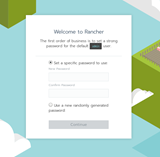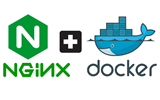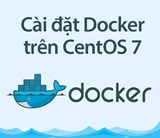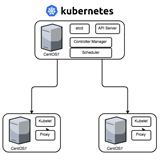Įvadas
„Docker“ yra programa, leidžianti įdiegti programinę įrangą virtualiuose konteineriuose. Jis buvo parašytas Go programavimo kalba. Šiame vadove sužinosite, kaip įdiegti Docker CE Debian 9.
„Docker CE“ yra „Community Edition“, kuris tinka kūrėjams ir mažoms komandoms.
Sukurkite naują Vultr VPS
1 GB RAM yra minimalus reikalavimas, nors rekomenduoju naudoti bent 2 GB RAM.
Sąranka ir diegimas
Prisijunkite prie serverio naudodami SSH per terminalą „Mac“ arba „PuTTY“ sistemoje „Windows“.
ssh [email protected]
Pakeiskite " 203.1.113.1" savo serverio IP.
Būsite paraginti įvesti " Yes" arba " No", kad pridėtumėte serverio RSA kontrolinį kodą į žinomų prieglobų sąrašą. Įveskite " Yes" ir paspauskite " Enter".
Dabar esate prisijungę kaip root, todėl jums nereikia naudoti sudo. Jei prisijungiate kaip vartotojas, turėsite sudoatlikti daugumą veiksmų.
Naujame kompiuteryje, kaip root, atnaujinkite apt.
apt-get update
Įdiekite paketus, kad apt galėtų naudoti saugyklą per HTTPS.
apt-get install apt-transport-https ca-certificates curl gnupg2 software-properties-common -y
Pridėkite oficialų Docker GPG raktą.
curl -fsSL https://download.docker.com/linux/$(. /etc/os-release; echo "$ID")/gpg | sudo apt-key add -
Patikrinkite, ar rakto piršto atspaudas yra lygus: 9DC8 5822 9FC7 DD38 854A E2D8 8D81 803C 0EBF CD88.
apt-key fingerprint 0EBFCD88
Norėdami nustatyti stabilią saugyklą, naudokite šią komandą.
add-apt-repository "deb [arch=amd64] https://download.docker.com/linux/$(. /etc/os-release; echo "$ID") $(lsb_release -cs) stable"
Atnaujinkite aptdar kartą.
apt-get update
Įdiekite „Docker“.
apt-get install docker-ce -y
Sukurti vartotoją
Jei nenorite paleisti Docker kaip root naudotojas, sukurkite ne root naudotoją.
adduser foo
Tada pridėkite šį vartotoją prie Docker grupės.
usermod -aG docker foo
Dabar iš naujo paleiskite „Docker“ paslaugą.
service docker restart
Įsitikinkite, kad „Docker CE“ įdiegtas tinkamai, paleisdami hello-worldvaizdą.
docker run hello-world
Ši komanda atsisiunčia bandomąjį vaizdą ir paleidžia jį konteineryje. Kai konteineris veikia, jis išspausdina tokį pranešimą ir išeina.
Unable to find image 'hello-world:latest' locally
latest: Pulling from library/hello-world
9a0669468bf7: Pull complete
Digest: sha256:cf2f6d004a59f7c18ec89df311cf0f6a1c714ec924eebcbfdd759a669b90e711
Status: Downloaded newer image for hello-world:latest
Hello from Docker!
This message shows that your installation appears to be working correctly.
To generate this message, Docker took the following steps:
1. The Docker client contacted the Docker daemon.
2. The Docker daemon pulled the "hello-world" image from the Docker Hub.
3. The Docker daemon created a new container from that image which runs the
executable that produces the output you are currently reading.
4. The Docker daemon streamed that output to the Docker client, which sent it
to your terminal.
To try something more ambitious, you can run an Ubuntu container with:
$ docker run -it ubuntu bash
Share images, automate workflows, and more with a free Docker ID:
https://cloud.docker.com/
For more examples and ideas, visit:
https://docs.docker.com/engine/userguide/











